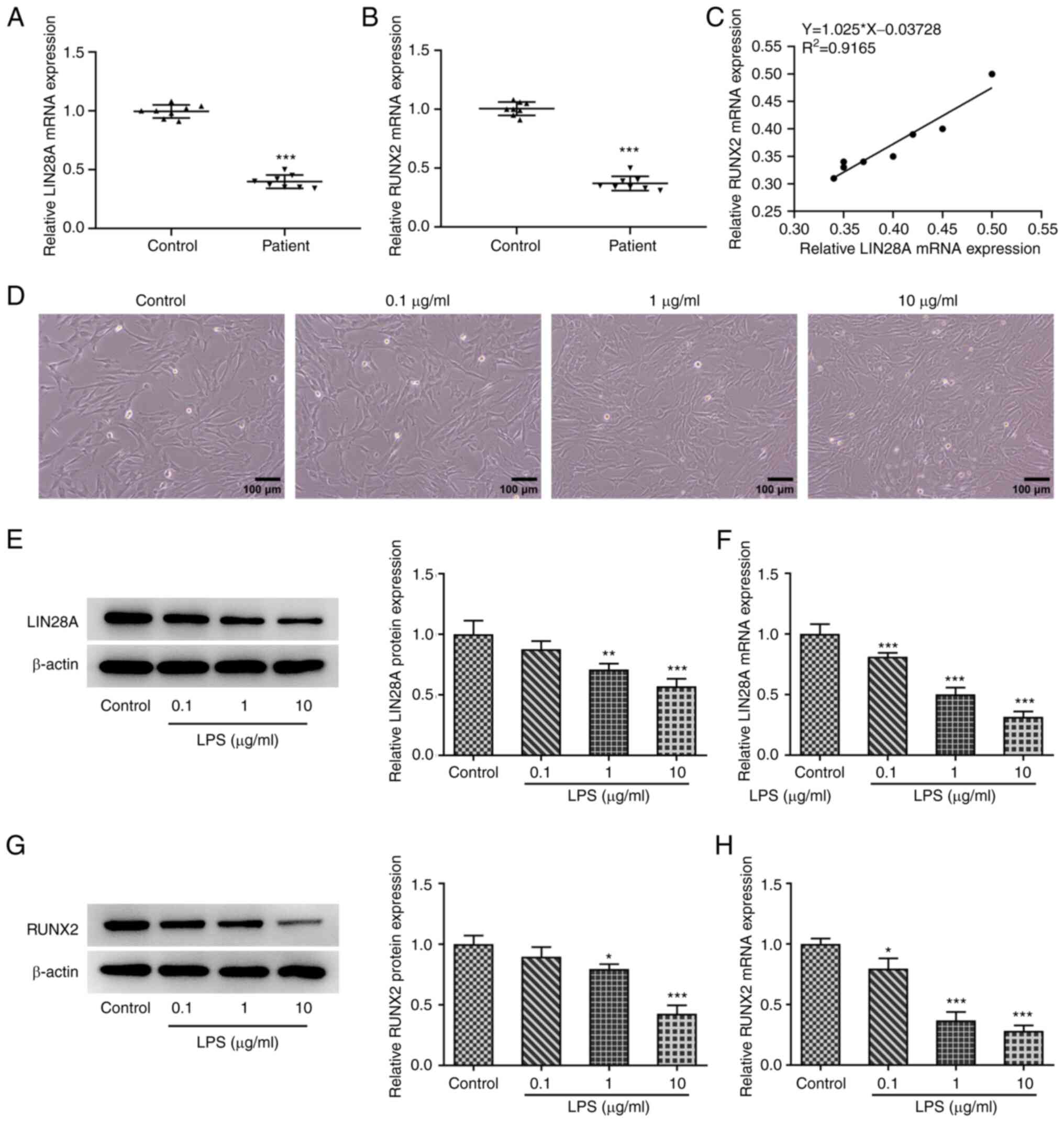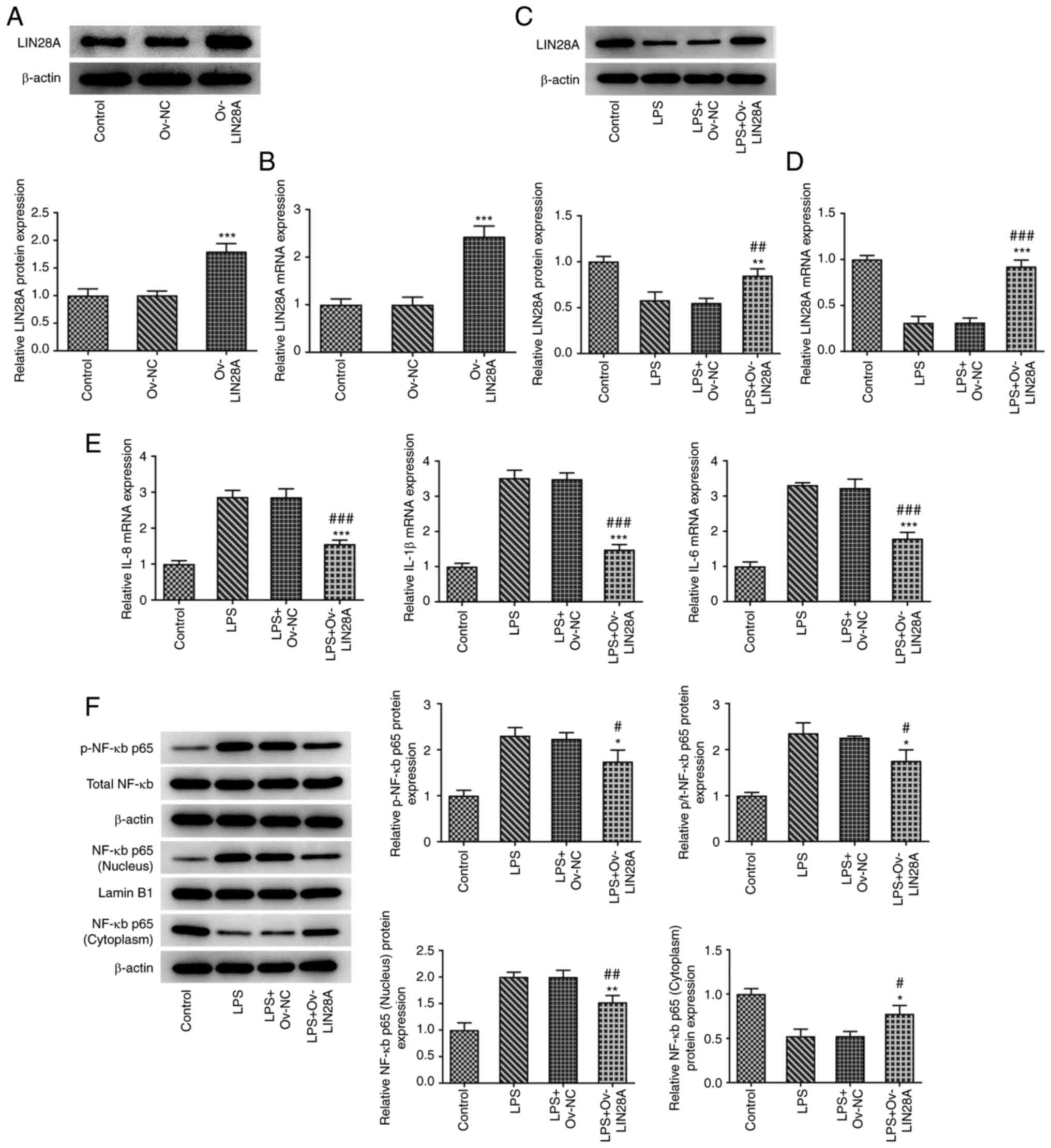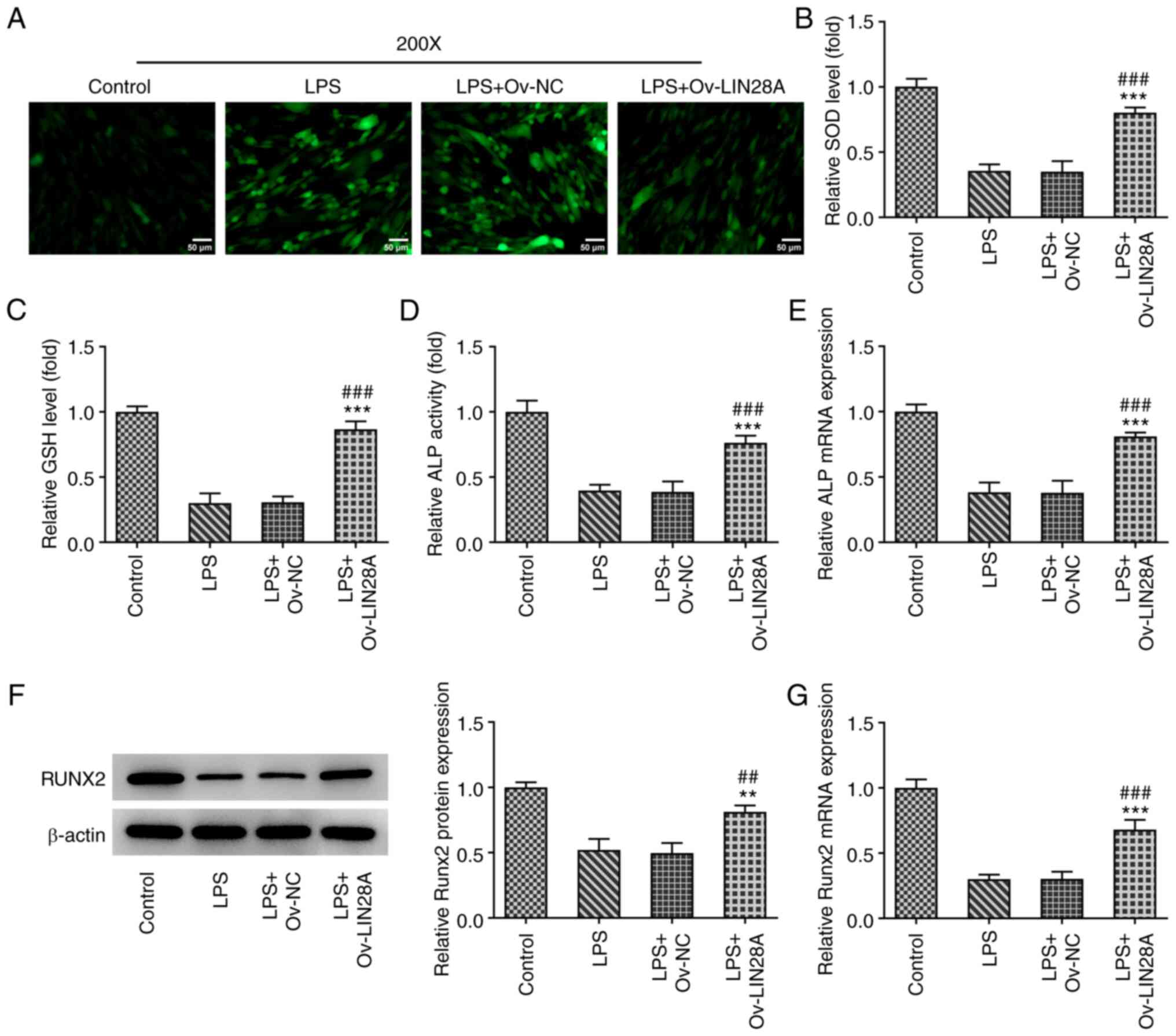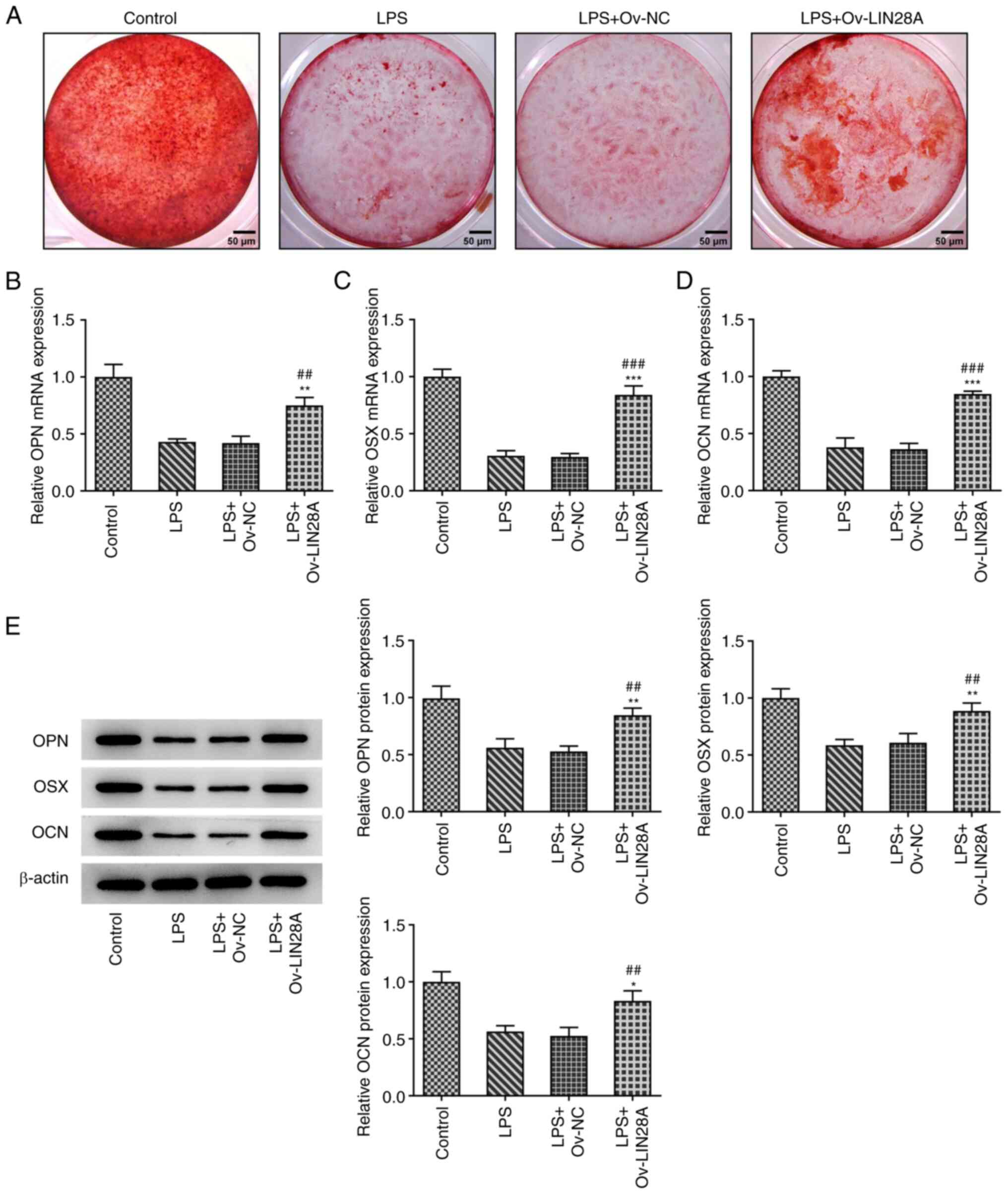|
1
|
Sanz M, Marco Del Castillo A, Jepsen S,
Gonzalez-Juanatey JR, D'Aiuto F, Bouchard P, Chapple I, Dietrich T,
Gotsman I, Graziani F, et al: Periodontitis and cardiovascular
diseases: Consensus report. J Clin Periodontol. 47:268–288.
2020.PubMed/NCBI View Article : Google Scholar
|
|
2
|
Slots J: Periodontitis: Facts, fallacies
and the future. Periodontology 2000. 75:7–23. 2017.PubMed/NCBI View Article : Google Scholar
|
|
3
|
Venugopal P, Koshy T, Lavu V, Ranga Rao S,
Ramasamy S, Hariharan S and Venkatesan V: Differential expression
of microRNAs let-7a, miR-125b, miR-100, and miR-21 and interaction
with NF-kB pathway genes in periodontitis pathogenesis. J Cell
Physiol. 233:5877–5884. 2018.PubMed/NCBI View Article : Google Scholar
|
|
4
|
Papapanou PN, Sanz M, Buduneli N, Dietrich
T, Feres M, Fine DH, Flemmig TF, Garcia R, Giannobile WV, Graziani
F, et al: Periodontitis: Consensus report of workgroup 2 of the
2017 world workshop on the classification of periodontal and
peri-implant diseases and conditions. J Clin Periodontol. 45 (Suppl
20):S162–S170. 2018.PubMed/NCBI View Article : Google Scholar
|
|
5
|
Sanz M, Herrera D, Kebschull M, Chapple I,
Jepsen S, Beglundh T, Sculean A and Tonetti MS: EFP Workshop
Participants and Methodological Consultants. Treatment of stage
I-III periodontitis-The EFP S3 level clinical practice guideline. J
Clin Periodontol. 47 (Suppl 22):S4–S60. 2020.PubMed/NCBI View Article : Google Scholar
|
|
6
|
Righolt AJ, Jevdjevic M, Marcenes W and
Listl S: Global-, regional-, and country-level economic impacts of
dental diseases in 2015. J Dent Res. 97:501–507. 2018.PubMed/NCBI View Article : Google Scholar
|
|
7
|
Shyh-Chang N and Daley GQ: Lin28: Primal
regulator of growth and metabolism in stem cells. Cell Stem Cell.
12:395–406. 2013.PubMed/NCBI View Article : Google Scholar
|
|
8
|
Ma F, Du X, Wei Y, Zhou Z, Clotaire DZJ,
Li N, Peng S, Li G and Hua J: LIN28A activates the transcription of
NANOG in dairy goat male germline stem cells. J Cell Physiol.
234:8113–8121. 2019.PubMed/NCBI View Article : Google Scholar
|
|
9
|
Zhong Y, Cao L, Ma H, Wang Q, Wei P, Yang
J, Mo Y, Cao L, Shuai C and Peng S: Lin28A regulates stem-like
properties of ovarian cancer cells by enriching RAN and HSBP1 mRNA
and up-regulating its protein expression. Int J Biol Sci.
16:1941–1953. 2020.PubMed/NCBI View Article : Google Scholar
|
|
10
|
Rhee YH, Kim TH, Jo AY, Chang MY, Park CH,
Kim SM, Song JJ, Oh SM, Yi SH, Kim HH, et al: LIN28A enhances the
therapeutic potential of cultured neural stem cells in a
Parkinson's disease model. Brain. 139:2722–2739. 2016.PubMed/NCBI View Article : Google Scholar
|
|
11
|
Park JH, Park BW, Kang YH, Byun SH, Hwang
SC, Kim DR, Woo DK and Byun JH: Lin28a enhances in vitro
osteoblastic differentiation of human periosteum-derived cells.
Cell Biochem Funct. 35:497–509. 2017.PubMed/NCBI View
Article : Google Scholar
|
|
12
|
Li X, Liang T, Chen SS, Wang M, Wang R, Li
K, Wang JC, Xu CW, Du N, Qin S and Ren H: Matrine suppression of
self-renewal was dependent on regulation of LIN28A/Let-7 pathway in
breast cancer stem cells. J Cell Biochem. 121:2139–2149.
2020.PubMed/NCBI View Article : Google Scholar
|
|
13
|
McDaniel K, Huang L, Sato K, Wu N, Annable
T, Zhou T, Ramos-Lorenzo S, Wan Y, Huang Q, Francis H, et al: The
let-7/Lin28 axis regulates activation of hepatic stellate cells in
alcoholic liver injury. J Biol Chem. 292:11336–11347.
2017.PubMed/NCBI View Article : Google Scholar
|
|
14
|
Lam JS, Anderson EM and Hao Y: LPS
quantitation procedures. Methods Mol Biol. 1149:375–402.
2014.PubMed/NCBI View Article : Google Scholar
|
|
15
|
Cao Y, Chen J, Ren G, Zhang Y, Tan X and
Yang L: Punicalagin prevents inflammation in LPS-induced RAW264.7
macrophages by inhibiting FoxO3a/autophagy signaling pathway.
Nutrients. 11(2794)2019.PubMed/NCBI View Article : Google Scholar
|
|
16
|
Shah SA, Khan M, Jo MH, Jo MG, Amin FU and
Kim MO: Melatonin stimulates the SIRT1/Nrf2 signaling pathway
counteracting lipopolysaccharide (LPS)-induced oxidative stress to
rescue postnatal rat brain. CNS Neurosci Ther. 23:33–44.
2017.PubMed/NCBI View Article : Google Scholar
|
|
17
|
Cai P, Cai T, Li X, Fan L, Chen G, Yu B
and Liu T: Herbacetin treatment remitted LPS induced inhibition of
osteoblast differentiation through blocking AKT/NF-κB signaling
pathway. Am J Transl Res. 11:865–874. 2019.PubMed/NCBI
|
|
18
|
Ning T, Shao J, Zhang X, Luo X, Huang X,
Wu H, Xu S, Wu B and Ma D: Ageing affects the proliferation and
mineralization of rat dental pulp stem cells under inflammatory
conditions. Int Endod J. 53:72–83. 2020.PubMed/NCBI View Article : Google Scholar
|
|
19
|
He Q, Yang S, Gu X, Li M, Wang C and Wei
F: Long noncoding RNA TUG1 facilitates osteogenic differentiation
of periodontal ligament stem cells via interacting with Lin28A.
Cell Death Dis. 9(455)2018.PubMed/NCBI View Article : Google Scholar
|
|
20
|
Livak KJ and Schmittgen TD: Analysis of
relative gene expression data using real-time quantitative PCR and
the 2(-Delta Delta C(T)) method. Methods. 25:402–408.
2001.PubMed/NCBI View Article : Google Scholar
|
|
21
|
Jang S, Jang S, Kim SY, Ko J, Kim E, Park
JY, Hyung H, Lee JH, Lim SG, Park S, et al: Overexpression of
Lin28a aggravates psoriasis-like phenotype by regulating the
proliferation and differentiation of keratinocytes. J Inflamm Res.
14:4299–4312. 2021.PubMed/NCBI View Article : Google Scholar
|
|
22
|
Luo J, Zou H, Deng L, Sun X, Yuan P and Li
P: Lin28 inhibits the differentiation from mouse embryonic stem
cells to glial lineage cells through upregulation of Yap1. Stem
Cells Int. 2021(6674283)2021.PubMed/NCBI View Article : Google Scholar
|
|
23
|
Nowak JS, Choudhury NR, de Lima Alves F,
Rappsilber J and Michlewski G: Lin28a regulates neuronal
differentiation and controls miR-9 production. Nat Commun.
5(3687)2014.PubMed/NCBI View Article : Google Scholar
|
|
24
|
Faas L, Warrander FC, Maguire R,
Ramsbottom SA, Quinn D, Genever P and Isaacs HV: Lin28 proteins are
required for germ layer specification in xenopus. Development.
140:976–986. 2013.PubMed/NCBI View Article : Google Scholar
|
|
25
|
Viswanathan SR and Daley GQ: Lin28: A
microRNA regulator with a macro role. Cell. 140:445–449.
2010.PubMed/NCBI View Article : Google Scholar
|
|
26
|
Komori T: Roles of Runx2 in skeletal
development. Adv Exp Med Biol. 962:83–93. 2017.PubMed/NCBI View Article : Google Scholar
|
|
27
|
Komori T: Regulation of osteoblast
differentiation by transcription factors. J Cell Biochem.
99:1233–1239. 2006.PubMed/NCBI View Article : Google Scholar
|
|
28
|
Sharma U, Pal D and Prasad R: Alkaline
phosphatase: An overview. Indian J Clin Biochem. 29:269–278.
2014.PubMed/NCBI View Article : Google Scholar
|
|
29
|
Yin N, Zhu L, Ding L, Yuan J, Du L, Pan M,
Xue F and Xiao H: MiR-135-5p promotes osteoblast differentiation by
targeting HIF1AN in MC3T3-E1 cells. Cell Mol Biol Lett.
24(51)2019.PubMed/NCBI View Article : Google Scholar
|
|
30
|
An J, Yang H, Zhang Q, Liu C, Zhao J,
Zhang L and Chen B: Natural products for treatment of osteoporosis:
The effects and mechanisms on promoting osteoblast-mediated bone
formation. Life Sci. 147:46–58. 2016.PubMed/NCBI View Article : Google Scholar
|
|
31
|
Ni SY, Xu WT, Liao GY, Wang YL and Li J:
LncRNA HOTAIR promotes LPS-induced inflammation and apoptosis of
cardiomyocytes via Lin28-mediated PDCD4 stability. Inflammation.
44:1452–1463. 2021.PubMed/NCBI View Article : Google Scholar
|
|
32
|
Yue Y, Zhang D, Jiang S, Li A, Guo A, Wu
X, Xia X, Cheng H, Tao T and Gu X: LIN28 expression in rat spinal
cord after injury. Neurochem Res. 39:862–874. 2014.PubMed/NCBI View Article : Google Scholar
|
|
33
|
Iliopoulos D, Hirsch HA and Struhl K: An
epigenetic switch involving NF-kappaB, Lin28, Let-7 MicroRNA, and
IL6 links inflammation to cell transformation. Cell. 139:693–706.
2009.PubMed/NCBI View Article : Google Scholar
|
|
34
|
Chawla M, Roy P and Basak S: Role of the
NF-κB system in context-specific tuning of the inflammatory gene
response. Curr Opin Immunol. 68:21–27. 2021.PubMed/NCBI View Article : Google Scholar
|
|
35
|
Barnabei L, Laplantine E, Mbongo W,
Rieux-Laucat F and Weil R: NF-κB: At the borders of autoimmunity
and inflammation. Front Immunol. 12(716469)2021.PubMed/NCBI View Article : Google Scholar
|
|
36
|
Newsholme P, Cruzat VF, Keane KN, Carlessi
R and de Bittencourt PI Jr: Molecular mechanisms of ROS production
and oxidative stress in diabetes. Biochem J. 473:4527–4550.
2016.PubMed/NCBI View Article : Google Scholar
|
|
37
|
Djordjevic A, Spasic S, Jovanovic-Galovic
A, Djordjevic R and Grubor-Lajsic G: Oxidative stress in diabetic
pregnancy: SOD, CAT and GSH-Px activity and lipid peroxidation
products. J Matern Fetal Neonatal Med. 16:367–372. 2004.PubMed/NCBI View Article : Google Scholar
|
|
38
|
Zhang M, Niu X, Hu J, Yuan Y, Sun S, Wang
J, Yu W, Wang C, Sun D and Wang H: Lin28a protects against
hypoxia/reoxygenation induced cardiomyocytes apoptosis by
alleviating mitochondrial dysfunction under high glucose/high fat
conditions. PLoS One. 9(e110580)2014.PubMed/NCBI View Article : Google Scholar
|


















